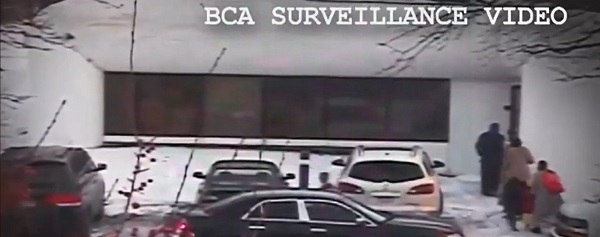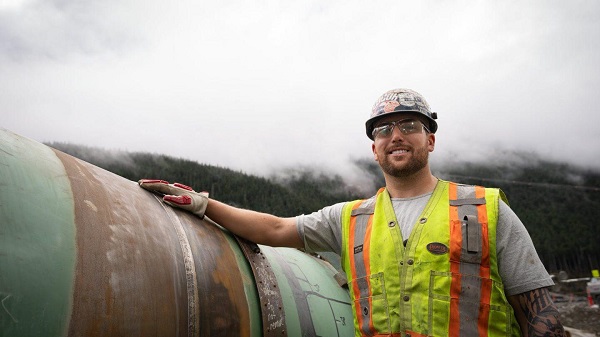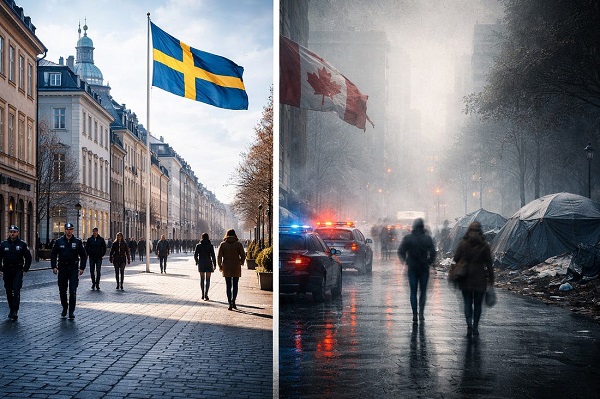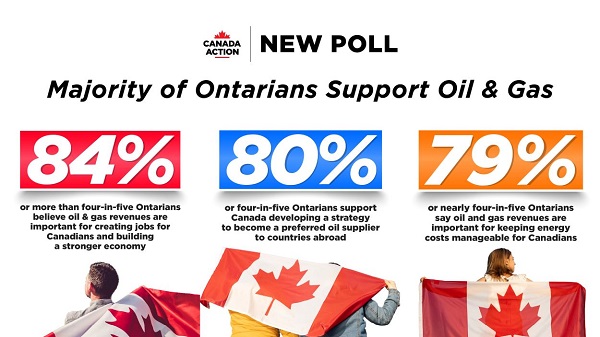International
Trump, Joe Rogan talk about corrupt media, vaccines, ‘gender transitions’ for children in 3-hour interview

From LifeSiteNews
By Stephen Kokx
In a highly anticipated interview with Joe Rogan, Trump rebuked ‘gender transitions’ for minors, said there must be voter ID and no mail ballots in the future, affirmed that Robert F. Kennedy Jr. will be part of his administration, and vowed to end the war in Ukraine.
Debunking claims from the Harris campaign that he is “exhausted,” Donald Trump sat down with popular podcaster Joe Rogan on Friday for an extensive, though not entirely earth-shattering, three-hour interview.
During the recording at Rogan’s Austin, Texas-based studio, Trump made no major missteps; nor did he or his interrogator tread new ground. Instead, the two held a relaxed conversation about issues Trump has addressed over the past several years, though some remarks about aliens were new.
Rogan initially asked Trump what it was like becoming president. Trump said it was a “surreal” experience while also praising the grandeur of the White House, explaining that he was especially in awe of the Lincoln bedroom. He then went on one of his famous “weaves” or tangents about how President Lincoln had “the yips” when it came to fighting Confederate General Robert E. Lee.
Trump admitted to Rogan – as he has to others previously – that he hired “many people” he shouldn’t have, like Bush-era neocon John Bolton. He reiterated that he was a “New York guy” all his life and not a D.C. guy, so he had to rely on others to help him appoint his cabinet. Trump has recently said elsewhere that he knows how “the swamp” works now and that he wouldn’t make the same staffing mistakes if re-elected.
Donald Trump says the biggest mistake of his presidency was hiring neocons. pic.twitter.com/FruMi04tJv
— The American Conservative (@amconmag) October 26, 2024
The most interesting parts of the interview didn’t come until the 2-hour mark, when Rogan praised Trump’s embrace of Robert F. Kennedy Jr.
Rogan asked Trump how he plans on “making America healthy again” with Kennedy, to which Trump responded by saying Kennedy has lots of ideas and that his presence in the campaign has many executives in Big Pharma worried. Regardless, he said Kennedy will 100 percent be part of his administration and will be able to do “whatever [he] want[s],” though not with environmental issues.
Joe Rogan says he loves Donald Trump and Robert Kennedy Jr. teaming up to Make America Healthy Again. 🇺🇸🇺🇸
ROGAN: "Are you completely committed to him in your administration?"
TRUMP: "Oh, I am. I said, focus on health. You can do whatever you want."
ROGAN: "Do you have anyone… pic.twitter.com/w5idXALoDe
— KanekoaTheGreat (@KanekoaTheGreat) October 26, 2024
Rogan also asked about vaccines, though he didn’t press Trump on his controversial Operation Warp Speed initiatives. Trump seemed to agree with what Rogan was saying about how vaccines can cause adverse health issues, but the two disappointingly didn’t pursue the topic at length. Still, Rogan reminded Trump that the U.S. is one of only two countries that allows pharmaceutical drugs to be advertised on television.
“What a lot of these drugs do is act to mitigate the effects of poor metabolic health. Most of these problems that these people are suffering from wouldn’t exist if we put an emphasis on metabolic health,” he said. “If people got healthier… a whole host of these problems that people are having would go away. And the problem with that from the pharmaceutical drug standpoint is they wouldn’t be able to sell drugs to these people… If we can send $175 billion to Ukraine, we can do something to fix a lot of the health problems the United States has.”
Trump agreed that there are many “side effects” to certain drugs and that he would “never take” some of them.
Trump told Rogan that his teenage son Barron has helped him with his podcast strategy, as he has appeared on a number of shows watched primarily by young men, also called “Zoomers,” in recent weeks. The approach has resulted in a massive uptick in favorability among male voters under 25 years of age. Rogan notably told Trump that “the media, to a large extent, acts as a propaganda arm of the Democrat Party.” He said that independent media is how you get around that.
TRUMP: "It's a lot easier if you are a Democrat."
ROGAN: "The media, to a large extent, acts as a propaganda arm of the Democrat Party… Most young people are aware of it. I think boomers still read the newspapers and believe in CNN."
pic.twitter.com/8Y7wtqHWne— CatholicVote (@CatholicVote) October 26, 2024
Rogan further commented on the political realignment taking place under Trump. He said that “the rebels” are “Republicans now. You want to be a rebel? You want to be punk rock? You’re want to like buck the system? You’re a conservative now.”
“And then the liberals are now pro-silencing criticism,” he added.
Rogan spend a large chunk of the rest of the interview asking Trump to provide more evidence of 2020 election interference. Trump, who has repeatedly discussed the topic before, especially during his debates with Biden and Harris, brought up the Russia collusion hoax, the suppression of the Hunter Biden laptop story, and how states changed voting laws in the lead-up to the election and said that, in the future, there must be voter ID and no mail-in ballots.
.@joerogan: Not having Voter ID is the most bizarre argument that I've never seen anybody articulate in a way that's convincing.
PRESIDENT TRUMP: Because they want to cheat.
ROGAN: Well, it doesn't make sense any other way. pic.twitter.com/KfiazrahkP
— Trump War Room (@TrumpWarRoom) October 26, 2024
Rogan agreed with the voter ID proposal while adding that he’d like to see debates change so the candidates sit down and simply discuss issues on their own without moderators.
The last half hour of the conversion proved to be the most relevant for religious and conservative Americans. After telling Rogan that Kamala Harris, who he called a “very low IQ person,” would be “lying on the floor comatose” if she appeared on his show, Trump hit back at her for claiming he is Hitler, saying that she is losing badly.
Trump also received praise from Rogan for his “comedic” timing and sensibilities, especially at his rallies. Rogan said that in order to do well in politics one should approach it with that sort of mindset at times. He praised Trump especially for his performance at the Al Smith Dinner earlier this month.
Trump also criticized pollsters, calling many of them “probably fake,” while also rebuking “sex change” surgeries for minors without parental consent and the Democratic Party’s push to ensure gender-confused males are able to compete in women’s sports. Rogan called that idea one of the most “bizarre and polarizing ideas of the left.”
"Who's going to vote for someone who wants to have men playing in women's sports?"
Donald Trump goes off on the Joe Rogan podcast on the far-left radical gender theory promoted by democrats, that's not popular by the electorate but by party elites. pic.twitter.com/vma471bwNo
— Efrain Flores Monsanto 🇨🇦🚛 (@realmonsanto) October 26, 2024
The remainder of the interview was spent talking about the JFK files, extraterrestrials, and the war in Ukraine. Trump said, as he has before, that his CIA director at the time Mike Pompeo as well as other “good people” asked him to not release all of the JFK files. But Trump appeared to say he would release the other 50 percent of them so the nation could have a “cleansing.”
Rogan then asked Trump about aliens. Trump cryptically referred to them as “people coming from space” while recalling that he has spoken with pilots in the military who have told him they have seen objects in the sky that could not be operated by human beings.
Before ending the podcast Trump told Rogan that he will meet with both Putin and Volodymyr Zelenskyy and end the war in Ukraine immediately.
Trump said that he will ensure the U.S. is respected again if re-elected and that the Chinese in particular are “dreaming” about a Harris presidency because they will take advantage of America if she is in office.
“She can’t put two sentences together … these guys are very smart; they’re very streetwise and they’re very tricky and evil and dangerous. And if she becomes the president of the United States — which I cannot believe can happen — I don’t think this country’s going to make it. I think really bad things will happen to our country.”
Following the interview, Trump flew to the battleground state of Michigan for a rally that began after 10 pm.
Business
Federal funds FROZEN after massive fraud uncovered: Trump cuts off Minnesota child care money

The Trump administration has cut off all federal child care payments to Minnesota, ordering a sweeping audit of the state’s day care system as investigators dig into what officials describe as one of the largest fraud schemes ever tied to social service programs.
“We have frozen all child care payments to the state of Minnesota,” Deputy Health and Human Services Secretary Jim O’Neill wrote Tuesday afternoon, saying the move comes after mounting evidence that taxpayer dollars were being siphoned to sham or non-operational day care centers. The freeze follows a viral investigative video that put a national spotlight on facilities across Minneapolis that were receiving large sums of public money despite appearing closed or barely functioning.
According to Alex Adams, assistant secretary at HHS’s Administration for Children and Families, Minnesota has already received roughly $185 million in federal child care funding this year alone. Those funds, the administration says, will remain locked down until the state can demonstrate that payments are being used lawfully. “Funds will be released only when states prove they are being spent legitimately,” Adams said.
We have frozen all child care payments to the state of Minnesota.
You have probably read the serious allegations that the state of Minnesota has funneled millions of taxpayer dollars to fraudulent daycares across Minnesota over the past decade.
Today we have taken three actions… pic.twitter.com/VYbyf3WGop
— Deputy Secretary Jim O'Neill (@HHS_Jim) December 30, 2025
O’Neill accused Minnesota officials of allowing abuse to fester for years, alleging the state has “funneled millions of taxpayer dollars to fraudulent daycares across Minnesota over the past decade.” To halt further losses, HHS outlined a series of immediate enforcement steps. Going forward, states seeking reimbursement through the Administration for Children and Families will be required to provide receipts or photographic proof documenting how funds are spent.
The department has also formally demanded that Gov. Tim Walz order a “comprehensive audit” of the day care centers flagged by investigators. O’Neill said the review must include attendance records, licensing documents, complaints, investigative files, and inspection reports. He pointed directly to a video published Friday by YouTuber Nick Shirley, who visited multiple Minneapolis-area centers listed as receiving millions in public funds but found locations that appeared closed or inactive.
In addition, HHS has launched a dedicated fraud hotline and email address at childcare.gov to encourage tips from parents, providers, and the public. “We have turned off the money spigot and we are finding the fraud,” O’Neill said, urging anyone with information to come forward.
Federal prosecutors say the scope of the alleged abuse is staggering. Authorities have already confirmed at least $1 billion in fraud tied to Minnesota child care programs, with 92 people charged so far. The U.S. Attorney’s Office has warned the total could ultimately reach as high as $9 billion as investigators continue combing through records.
The funding freeze marks one of the most aggressive crackdowns yet by the Trump administration on state-run social programs accused of lax oversight, sending a clear message that federal dollars will not flow until Minnesota can account for where the money went — and who was cashing in.
Business
Resurfaced Video Shows How Somali Scammers Used Day Care Centers To Scam State


From the Daily Caller News Foundation
A resurfaced 2018 video from a Minneapolis-area TV station shows how Somali scammers allegedly bilked Minnesota out of millions of dollars for services that they never provided.
Independent journalist Nick Shirley touched off a storm on social media Friday after he posted a photo of one day-care center, which displayed a banner calling it “The Greater Learing Center” on X, along with a 42-minute video that went viral showing him visiting that and other day-care centers. The surveillance video, which aired on Fox 9 in 2018 after being taken in 2015, showed parents taking kids into the center, then leaving with them minutes later, according to Fox News.
“They were billing too much, they went up to high,” Hennepin County attorney Mike Freeman told Fox 9 in 2018. “It’s hard to imagine they were serving that many people. Frankly if you’re going to cheat, cheat little, because if you cheat big, you’re going to get caught.”
Dear Readers:
As a nonprofit, we are dependent on the generosity of our readers.
Please consider making a small donation of any amount here.
Thank you!
Democratic Gov. Tim Walz of Minnesota was accused of engaging in “systemic” retaliation against whistleblowers in a Nov. 30 statement by state employees. Assistant United States Attorney Joe Thompson announced on Dec. 18 that the amount of suspected fraud in Minnesota’s Medicaid program had reached over $9 billion.
After Shirley’s video went viral, FBI Director Kash Patel announced the agency was already sending additional resources in a Sunday post on X, citing the case surrounding Feeding Our Future, which at one point accused the Minnesota government of racism during litigation over the suspension of funds after earlier allegations of fraud.
KSTP reported that the Quality Learning Center, one of the centers visited by Shirley, had 95 citations for violations from one Minnesota agency between 2019 to 2023.
President Donald Trump announced in a Nov. 21 post on Truth Social that he would end “Temporary Protected Status” for Somalis in the state in response to allegations of welfare fraud and said that the influx of refugees had “destroyed our country.”
-

 Alberta1 day ago
Alberta1 day agoThe Canadian Energy Centre’s biggest stories of 2025
-

 Business1 day ago
Business1 day agoResurfaced Video Shows How Somali Scammers Used Day Care Centers To Scam State
-

 Bruce Dowbiggin2 days ago
Bruce Dowbiggin2 days agoIn Contentious Canada Reality Is Still Six Degrees Of Hockey
-

 Business13 hours ago
Business13 hours agoDark clouds loom over Canada’s economy in 2026
-

 Business2 days ago
Business2 days agoDOOR TO DOOR: Feds descend on Minneapolis day cares tied to massive fraud
-

 Addictions10 hours ago
Addictions10 hours agoCoffee, Nicotine, and the Politics of Acceptable Addiction
-

 Business2 days ago
Business2 days agoCanada needs serious tax cuts in 2026
-

 Business1 day ago
Business1 day agoOttawa Is Still Dodging The China Interference Threat









